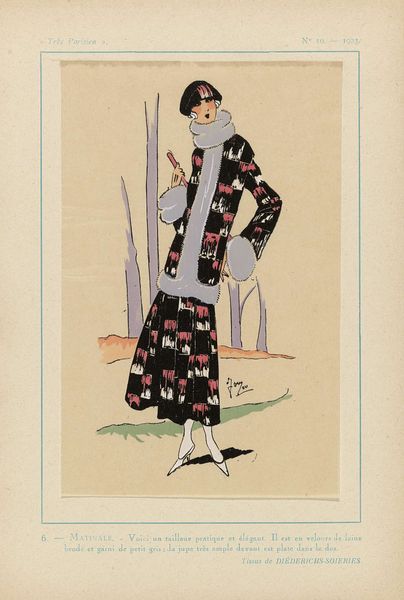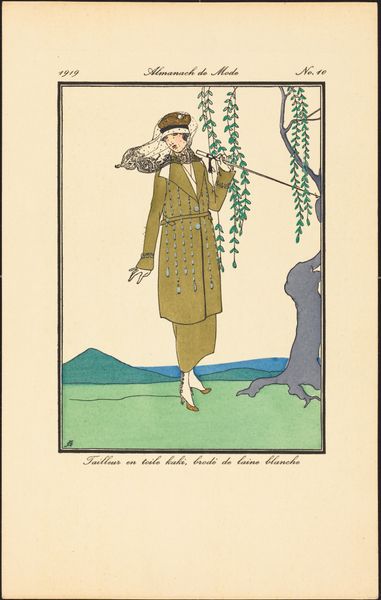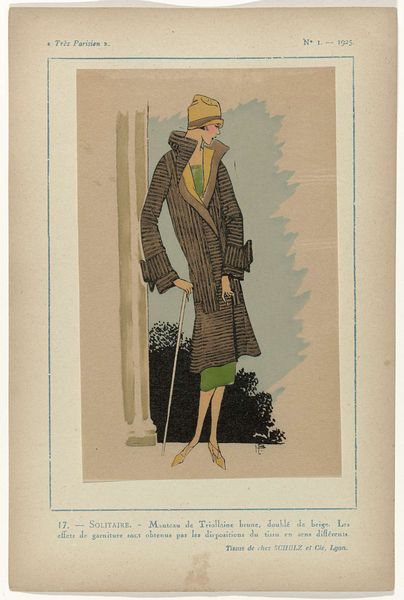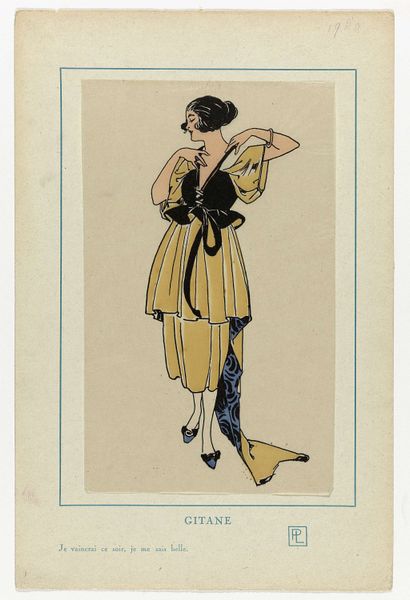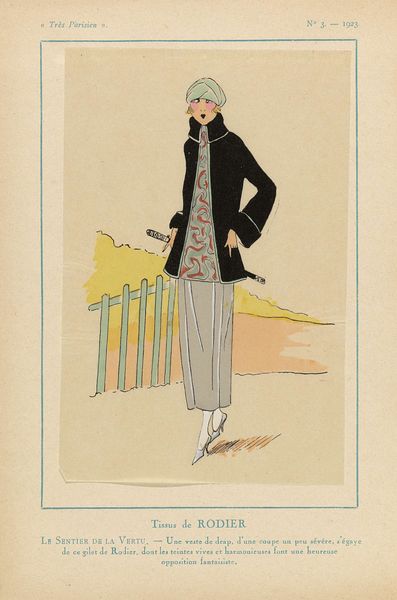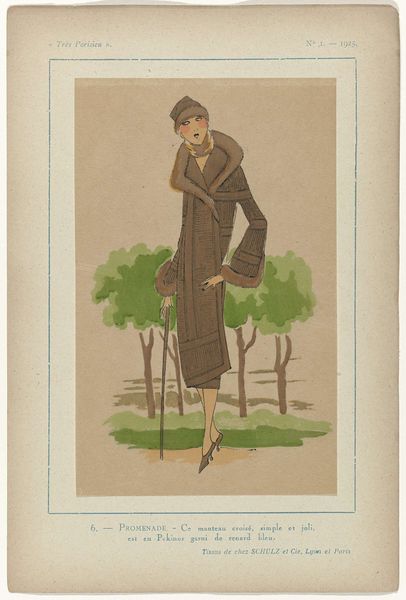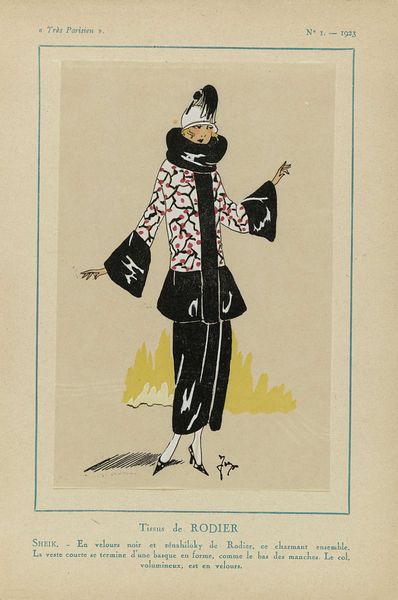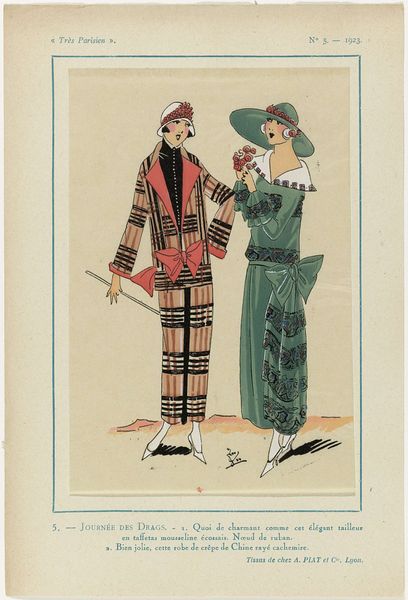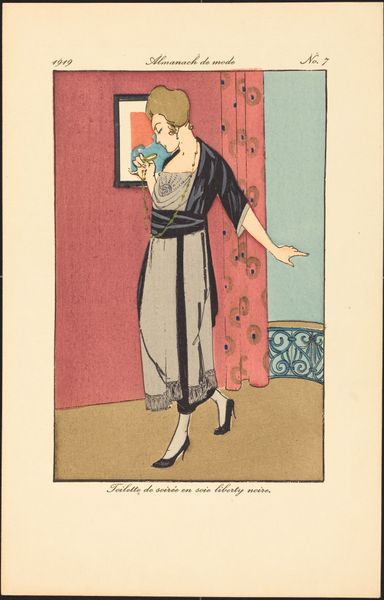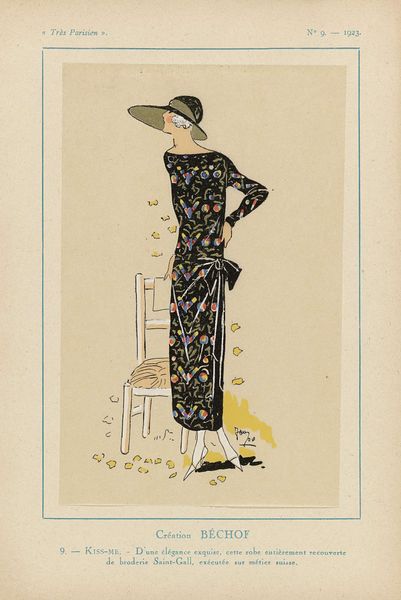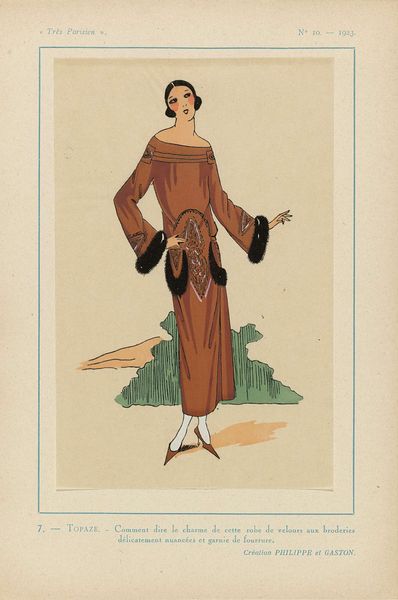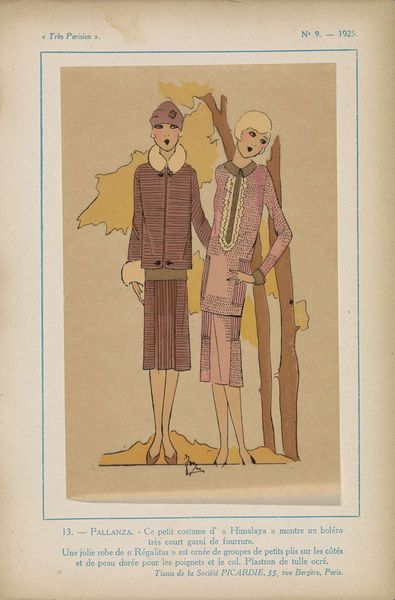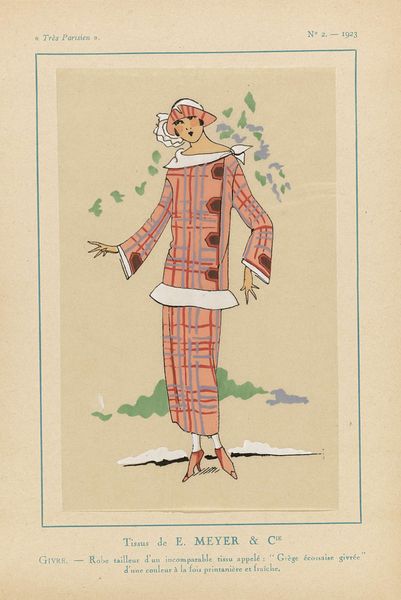
Très Parisien, 1923, No 9: 2.- FEUILLE MORTE. - Silhouette très moderne... 1923
0:00
0:00
anonymous
Rijksmuseum
drawing, ink
#
portrait
#
art-deco
#
drawing
#
blue ink drawing
#
ink
#
sketchbook drawing
#
watercolour illustration
#
cartoon carciture
Dimensions: height 269 mm, width 180 mm
Copyright: Rijks Museum: Open Domain
Curator: This watercolour and ink drawing, currently residing in the Rijksmuseum, is titled "Trés Parisien, 1923, No 9: 2. FEUILLE MORTE. Silhouette très moderne…" It’s dated, quite clearly, to 1923. Editor: "Feuille Morte," or Dead Leaf… Yes, the autumnal color palette struck me immediately. There's a deliberate elegance in its melancholy, but it also seems a bit aloof. Curator: It appeared in a fashion publication. We can see how it reflects the rising popularity of Art Deco in the 1920s and how it permeated the visual culture. Note the figure’s sleek lines and the almost architectural quality of her outfit. Editor: Precisely! The text notes the coat is in "velours de laine carreau sibeliné," which suggests the fabric's texture and grid pattern are vital. The trimmed fur elements emphasize the luxuriousness and also draw our eyes to the labor-intensive material production behind fashion itself. I am wondering how it connects with the larger textile industry, particularly its production methods. Curator: Absolutely. This image provided a template for aspirational consumers. Think of it not just as an aesthetic object, but as a vector for influencing ideas about class and modernity, disseminated via mass media. Fashion design holds profound historical weight, with such imagery playing a decisive role in how clothing trends became embedded in modern experience. Editor: Right. So it's less about artistic genius and more about material and how it becomes culturally meaningful through consumption and design? This really captures how industries co-opt certain skills or even forms associated with traditional craft. Is fur trimming a craft or industry at this moment, perhaps? Curator: Indeed. The image operates in the complex exchange between production, advertising, and social identity. Editor: Viewing art in that context, we start seeing the complex web of historical relations, and it forces me to rethink what art should represent, then and now. Curator: For me, it is amazing how quickly ideas become encoded as objects within the flows of production and representation. Editor: And what is so remarkable to me, is to appreciate how objects, in turn, determine and influence modes of existence.
Comments
No comments
Be the first to comment and join the conversation on the ultimate creative platform.
